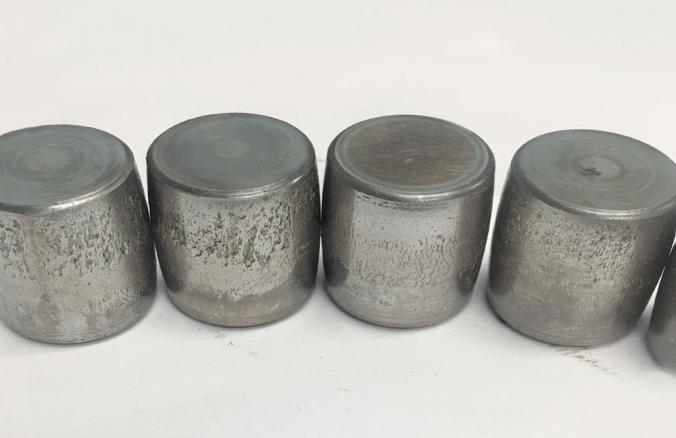Why companies are moving to condition-based maintenance
Every day experienced and capable people are trying to second-guess the maintenance requirements of the machines that populate their plants. The reason is simple: an effective maintenance program increases uptime, decreases maintenance costs, reduces unplanned outages, and extends the lives of assets. In today’s highly competitive market, companies of all sizes are looking for ways to run a leaner and more efficient operation.
An effective maintenance program must include a way to collect and analyse vibration data. After all, vibration matters wherever critical motors exist.
Critical motors can be found in just about every manufacturing plant and facility. As an example:
• Food and beverage plants often operate on tight margins. That can make reliability maintenance a challenge to implement, especially since these facilities are interested in training and the ability to scale to cover critical assets.
• Automotive manufacturing operations often have larger reliability teams and stronger buy-in for downtime prevention.
• Machinery manufacturing plants vary in their approach to reliability, but condition monitoring applications are getting faster.
All these industries share the objective of integrating data and analytics into their maintenance programs to transform them into reliability programs. The right program increases equipment availability and performance by identifying and removing the cause of potential failures. Reliability programs can significantly reduce the possibility of failure and its impact.
Some of the frustrations with current condition monitoring solutions include a lack of high-precision, in-depth intelligence, time-consuming, complex installation and setup, limited diagnostic range and service offerings which increase total cost of ownership.
In addition, some condition monitoring solutions can be hard to scale to multiple assets and data sets for individual products are often siloed which leads to systems detecting only one type of fault. Wired and wireless-only sensors are often incompatible with plant network infrastructure resulting in reams of unusable data.
As maintenance is a means to operate safer and more efficiently, industrial plants across the globe are taking a more proactive approach by moving away from simply responding to the crisis of the day. Today, the immediate goal is to find and fix problems before there is a breakdown. The long-term goal is to drive business value.
The value of condition-based maintenance
Monitoring and studying the trends of machine health are staples of predictive maintenance. However, condition-based maintenance (CBM) is a better term because no one can predict when a machine will fail. CBM uses machine condition data, contextual data, trends, analytics and knowledge of specific machines to determine how machines are performing.
Wireless vibration sensors for vibration screening and analysis are one of the most powerful ways to enact CBM. Monitors like the new Fluke 3563 Vibration Analysis Sensor are attached to critical machines to track vibration data over time and identify faults. Using accelerometers, vibration monitors measure changes in the amplitude, frequency and intensity of vibration. When combined with the LIVE-AssetTM Portal software, teams can spot patterns, receive alerts about anomalies and compare measurements.
While critical machines benefit from more powerful vibration analysis sensors that provide in-depth data to help determine the nature of a problem, the new Fluke 3562 Screening Vibration Sensor is an effective way to track semi-critical machines. The Fluke 3562 is a battery-less sensor that runs on power provided by either a thermoelectric or photovoltaic energy harvester. The screening sensor collects snapshots of data, such as vibration levels, temperature and humidity, and trends the nine highest FFT peaks by magnitude. Taken together, vibration screening and analysis combined with software, create a powerful condition monitoring solution that detects if machines are functioning correctly.
Using condition monitoring to inform CBM
CBM is based on machine condition data that can be read by condition monitoring devices or transmitted by sensors connected to the machine. The advantages of this approach include:
• Always-on asset monitoring: When internet-enabled devices are connected to software, measurements are automatically aggregated around the clock. Data is stored in the cloud, assigned to assets, and organised for users to review.
• Faster identification of the root cause of a problem: Teams can swiftly troubleshoot assets using different condition monitoring devices and compare measurements over time to quickly pinpoint anomalies.
• Monitor equipment safely from anywhere: Wireless sensor measurements are automatically sent to the cloud without human intervention, enabling teams to access data remotely on smart devices.
Creating a connected reliability program
CBM is part of a complete connected reliability program. Fluke Reliability supports companies by building data systems that provide cost-effective maintenance and reliability. The company’s products keep customers informed about their assets’ health with advanced software solutions and services driving better maintenance decisions, such as improving productivity, increasing uptime and reducing costs.










![EMR_AMS-Asset-Monitor-banner_300x600_MW[62]OCT EMR_AMS-Asset-Monitor-banner_300x600_MW[62]OCT](/var/ezwebin_site/storage/images/media/images/emr_ams-asset-monitor-banner_300x600_mw-62-oct/79406-1-eng-GB/EMR_AMS-Asset-Monitor-banner_300x600_MW-62-OCT.png)



